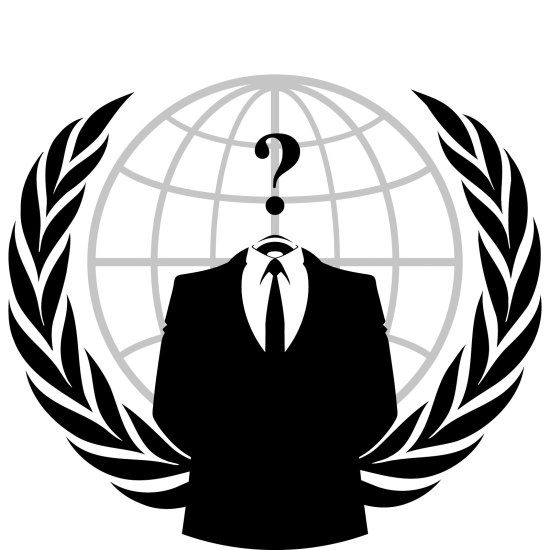Anonymous has always been and continues to be a “leaderless collection of hackers and activists who come together in response to perceived injustices,” writes Martyn Casserly in an article on the subject on PC Advisor. The term ‘hacktivist’ originates from a hacker collective named The Cult of The Dead Cow who, in 1996, joined the words ‘hacker’ and ‘activist’ together to describe people who had a political agenda for their digital infiltrations.
You don’t necessarily have to be a hacker to be a member of Anonymous. To be part of Anonymous, one simply needs to self-identify as Anonymous. “Individuals without technical skills can participate by collectively writing press communiques, giving media interviews on IRC, designing propaganda posters, editing videos and mining information that is publicly available but difficult to access,” explains Gabriella Coleman in her paper, ‘Anonymous in Context: The Politics and Power behind the Mask.’
“No single group or individual can dictate the use of the name or iconography of Anonymous much less claim legal ownership of its names, icons and actions. It has now become the quintessential anti-brand brand,” she adds.
When they started
The Anonymous movement is said to have emerged through the 4chan.org image board, where every user has to chat under the same pseudonym: Anonymous. At this time, Anonymous activities were almost exclusively of the ‘trolling’ nature, using the internet to pull pranks on people and organisations for the sake of “the lulz” (“the laughs”).
As a collective with a conscience, Anonymous first announced itself to the world in 2008 via a YouTube video in which it declared war on the Church of Scientology. This came about after an internal promotional video, starring Tom Cruise, was leaked onto the internet – and the Church’s legal team issued take-down orders, threatening legal action to any site hosting the video that failed to comply. This struck at the very heart of issues that hackers at Anonymous held sacred: Free speech and non-censorship.
Where they are
Anonymous is everywhere and nowhere. “They have no meet-ups, membership programs, or stated agenda. This is how they remain Anonymous,” says Casserly.
Anonymous members, known as ‘Anons,’ who choose to appear in public will often be seen wearing stylised Guy Fawkes masks, popularised by the novel, ‘V for Vendetta’ and film of the same name. Other Anons work independently.
“Mutability and dynamism continue to be a staple of Anonymous’ activist and historical development,” says Coleman. “As a result, it is difficult to forecast when or why Anonymous will strike, when a new node will appear, whether a campaign will be successful, and how Anonymous might change direction or tactics during the course of an operation.”
What and how they do what they do
As Casserly explains, the common weapon of the hacktivist is a Distributed Denial of Service (DDoS) attack, which bombards the target servers with thousands of page requests, leading to the site to crash. “The idea is likened to a virtual sit-in and seen as disruptive rather than destructive because the target sites aren’t damaged, no information is stolen, but the volume of requests causes them to shut down, thus preventing anyone from gaining access.”
“Operations tend to be reactive; existing local, regional and international events and causes can trigger action from Anonymous. Leaking and exposing security vulnerabilities are two common proactive interventions,” says Coleman.
Why they do what they do
“A by-product of the Internet, Anonymous rises up most forcefully and shores up the most support when defending values associated with this global communication platform, such as free speech,” says Coleman.
Whether you’re an admirer or a skeptic, Anonymous has got the world’s attention. “Many are watching, recognising the power of the mask as a potential force to unmask corruption, hypocrisy, and state and corporate secrecy,” concludes Coleman.
By Heine van Niekerk, CEO, Foresight Advisory Services
About Foresight Advisory Services
 Foresight Advisory Services (Pty) Ltd updates customers’ business map with Intelligence Support, Counter Intelligence and Stakeholder Management Support, shows them what to avoid, and helps illustrate how they can achieve their goals.
Foresight Advisory Services (Pty) Ltd updates customers’ business map with Intelligence Support, Counter Intelligence and Stakeholder Management Support, shows them what to avoid, and helps illustrate how they can achieve their goals.
The opinions expressed in this post belongs to the individual contributors and do not necessarily reflect the views of Information Security Buzz.



